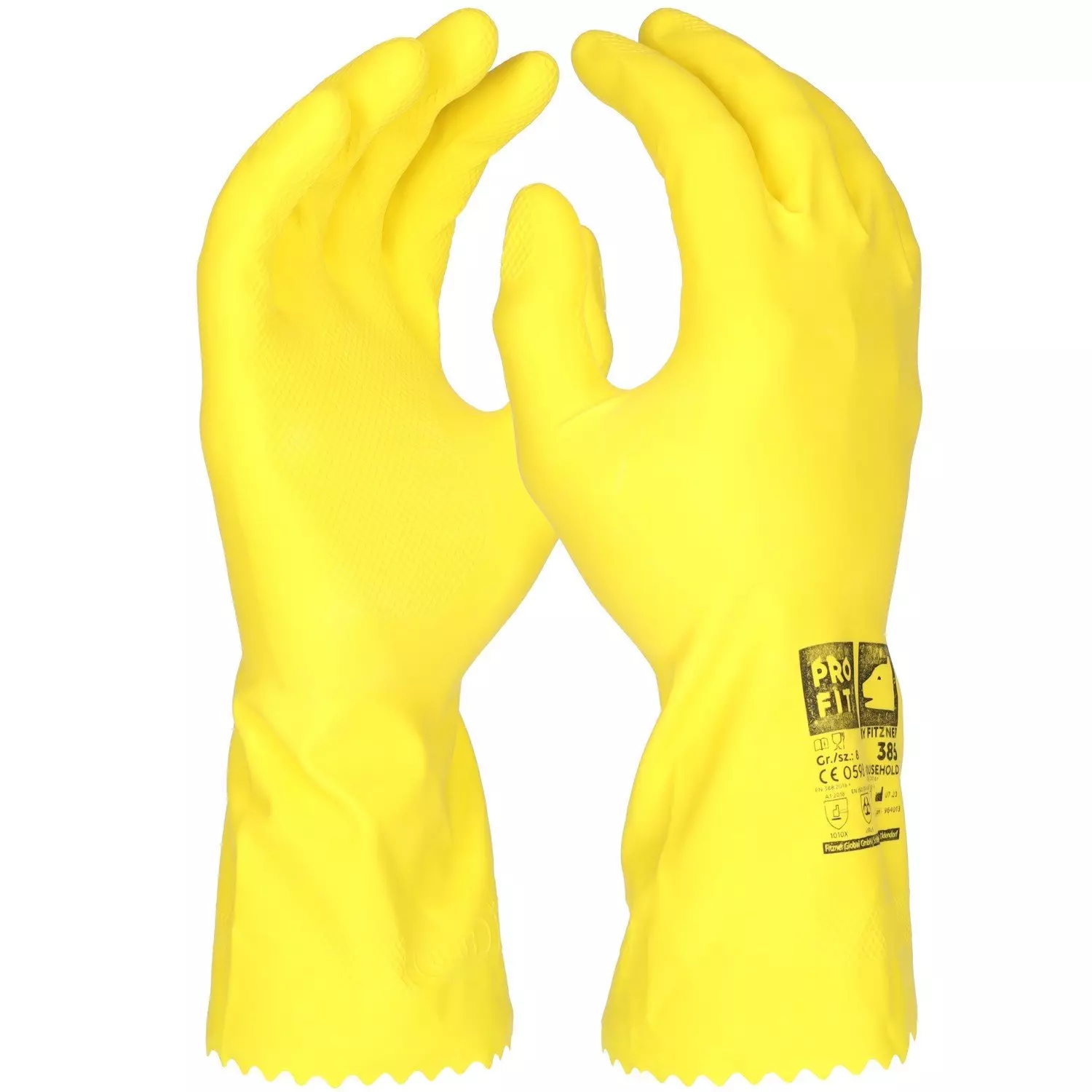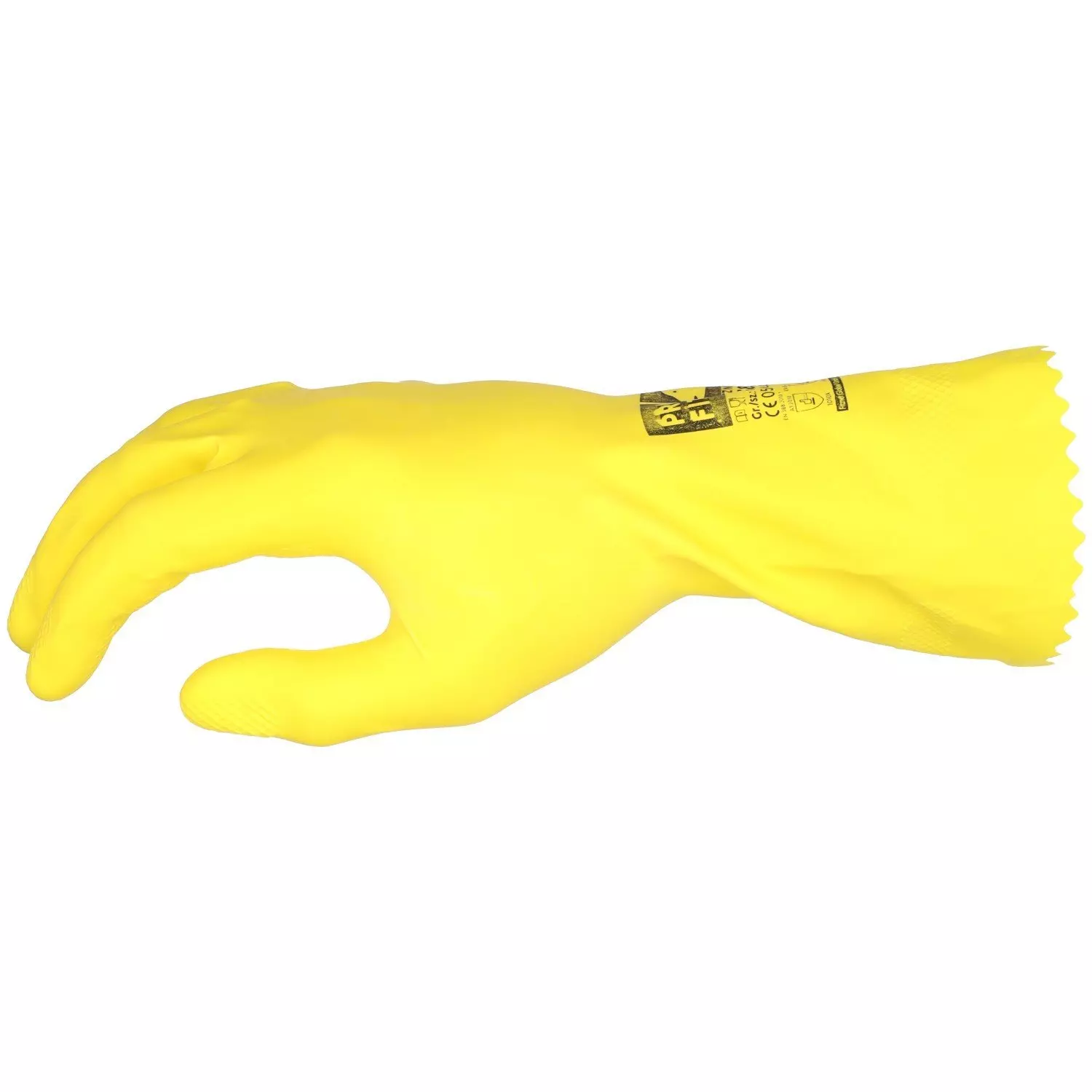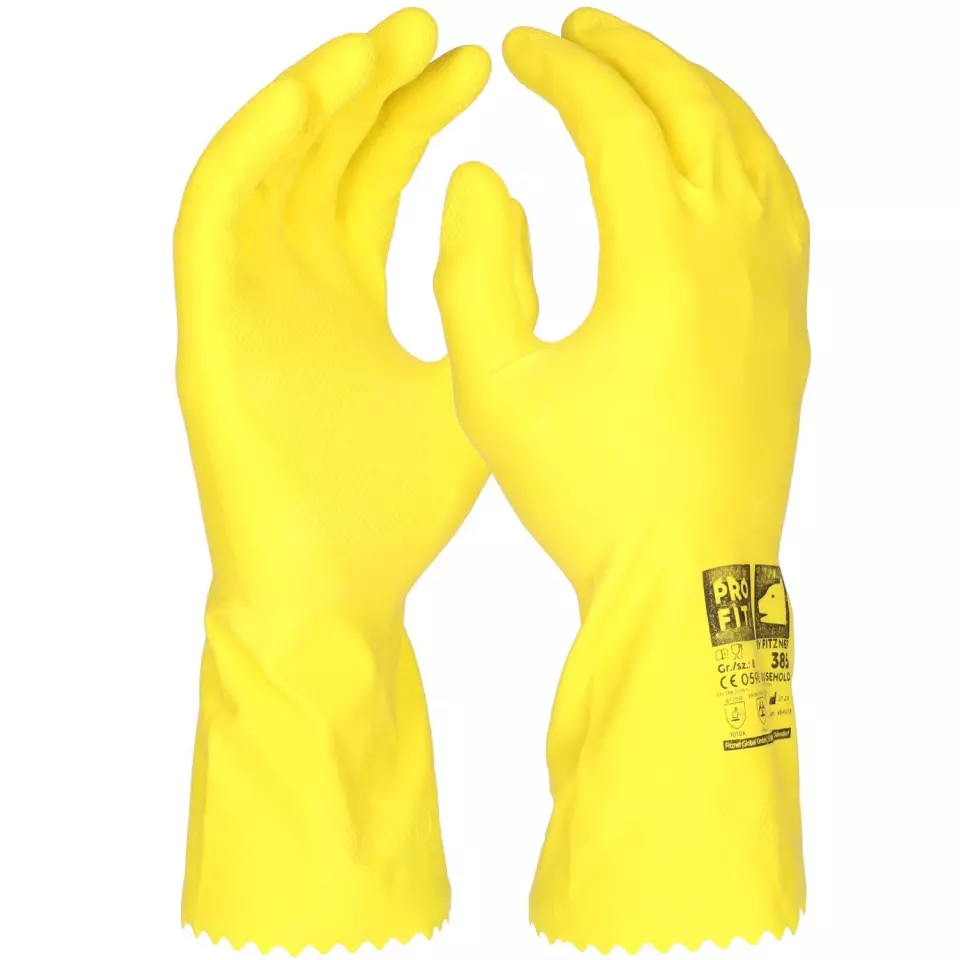

Features You'll Love

Coating Material · Latex
The material applied to glove surfaces to enhance grip, protection, and durability for specific work conditions and hazards.
PRO FIT
Latex Household Gloves, 12 pairs
Latex Household Gloves, 12 pairs
5 / 5
18,78 €
Price per 12 pairs
1,56 € / pair
Choose size
Shipping fee is 7,95 € for orders under 1 200,00 €
Features You'll Love

Coating Material · Latex
The material applied to glove surfaces to enhance grip, protection, and durability for specific work conditions and hazards.
Product description
The latex household glove offers professional protection and comfort for demanding cleaning tasks. The cotton flock lining and the molded honeycomb pattern on the palm and fingers ensure optimal tactile sensitivity and secure grip. Thanks to its antibacterial treatment and food approval, the glove is particularly suitable for hygiene-sensitive areas.
Product features:
- Cotton flock lining for high wearing comfort
- Molded honeycomb pattern for secure grip
- Antibacterial treatment
- Chlorinated surface
- Silicone-free manufacturing process
- Liquid-proof
Technical details:
- Standard quality
- Optimal tactile sensitivity
- Food approved
Applications:
- Wet environments
- Handling slippery objects
- Food processing
Certifications:
- EN ISO 21420:2020
- EN 388:2016 A1:2018
- EN ISO 374-1:2016 A1:2018
- EN ISO 374-5:2016